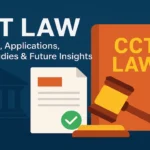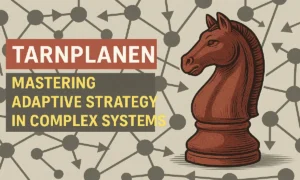In real estate, property rights are vital, and easements are a common part of these rights. Easements allow people or organizations to use another person’s property for specific purposes.
Disputes over these agreements can lead to legal battles, as they affect both the landowner and the third party involved.
One such high-profile dispute in California is the Montecito Country Club easement case. This article covers the Montecito Country Club easement dispute, its impact, and insights on easements in property law.
Let’s dive into the details of this important case.
The Origins of the Dispute
Easements are designed to ensure that landowners can use their property in specific ways while allowing neighbors or third parties to do the same under defined terms. However, disputes can arise when these agreements are not respected.
In the Montecito Country Club case, the Roots took matters into their own hands, modifying an easement without proper consent.
The story begins with Kevin and Jeannette Root, the owners of a property next to the Montecito Country Club. Their land shared an easement with the country club, allowing access for certain uses.
However, the Roots took matters into their own hands and made changes to the easement. They installed landscaping and built structures on the land without getting permission from the Montecito Country Club, whose owner is Ty Warner.
The changes the Roots made interfered with the club’s plans to use the easement for things like cart paths and maintenance work. Naturally, this upset the club and led to legal action.
The Club’s Response
In any easement dispute, the party whose rights have been violated often needs to take swift action to protect their interests.
The Montecito Country Club, finding its plans and operations affected by the unauthorized changes, filed a lawsuit to ensure that their easement rights were upheld.
After noticing that the easement was altered without consent, the Montecito Country Club took action. The club filed a legal complaint against the Roots, stating that their unauthorized changes interfered with the purpose of the easement.
The club argued that the alterations hindered its future use of the land, which was crucial for maintaining the property and running the club smoothly.
The dispute wasn’t just about property rights—it was about making sure that agreements related to land use were respected and upheld.
Court’s Ruling
Once a dispute has escalated to the court system, the ruling is often final, and the consequences can be significant. In this case, the Santa Barbara Superior Court determined that the Roots violated the easement agreement, and their actions needed to be corrected.
In July 2024, the Santa Barbara Superior Court delivered its ruling. The court sided with the Montecito Country Club, ordering the Roots to reverse the changes they had made to the easement.
This meant removing the landscaping and restoring the land to its original condition. Additionally, the Roots were instructed to pay for the restoration, and the court would oversee the process to ensure the job was done properly.
This ruling reinforced the importance of adhering to easement agreements and highlighted how legal systems protect the rights of property owners and easement holders.
Legal and Financial Consequences
Easement disputes don’t just have legal implications; they can come with heavy financial burdens. The case illustrates how failing to follow easement agreements can lead to expensive consequences for the party in violation.
Legal Basis for the Court’s Decision
The court’s decision rested on the principle of easement rights. In simple terms, an easement is a legal right to use someone else’s property for a specific purpose. In this case, the Montecito Country Club had a right to use the land for certain purposes, and the Roots’ actions violated that right.
The court ruled that the Roots had overstepped by making changes to the land without permission.
Financial Impact
For the Roots, the ruling came with significant financial consequences. They were ordered to cover the cost of restoring the easement and paying any legal fees associated with the case.
For the Montecito Country Club, while the victory upheld their property rights, it also illustrated the financial and practical risks of not clearly defining easements in real estate agreements. The club would have to invest time and money into restoring the easement and ensuring that future conflicts were avoided.
Real Estate Agreements
This case also serves as a reminder to all property owners about the importance of clear and detailed easement agreements. When buying or selling property, it’s essential to understand the rights attached to easements.
Failure to do so can lead to costly disputes that could have been easily avoided with a little more due diligence.
The Importance of Easements in Property Law
Easements are a fundamental part of property law. They play a significant role in how land is used and shared. Understanding easements is essential to prevent misunderstandings and legal conflicts, which could otherwise lead to costly consequences, as seen in the Montecito Country Club dispute.
Easements are a critical part of property law. They define how one property owner can use another’s land. There are different types of easements, and they can be created in various ways.
Understanding easements is crucial for anyone involved in real estate, as these agreements can impact property use for years to come.
| Aspect | Description | Key Insight |
|---|---|---|
| Definition | An easement is a legal right to use another person’s land for a specific purpose, such as access or utilities. | It does not grant ownership but allows controlled usage. |
| Types of Easements | Includes affirmative (right to use) and negative (restriction on use) easements. | Common types: right of way, utility access, and drainage. |
| Creation Methods | Can be created through express grant, implication, necessity, or prescription. | Each method carries unique legal implications and proof requirements. |
| Role in Property Law | Defines property boundaries and clarifies usage rights between owners. | Prevents conflicts and ensures orderly property use. |
| Legal Protection | Easements are enforceable in court and recorded in property deeds. | Violations can result in injunctions or damages. |
| Impact on Property Value | Easements can increase or decrease value depending on their nature. | Access easements often enhance usability and resale potential. |
| Dispute Resolution | Handled through negotiation, mediation, or litigation. | Clear documentation minimizes legal disputes. |
Types of Easements
- Right-of-Way Easements: These allow access to a particular area of land, like a path or driveway.
- Utility Easements: These allow utility companies to install and maintain infrastructure such as power lines or water pipes.
- Prescriptive Easements: These occur when someone uses land for a long time without objection, often leading to legal rights to continue using it.
Terminating an Easement
Easements don’t last forever. They can be terminated in several ways:
- If the purpose of the easement is no longer needed.
- If both parties agree to end it.
- If a court rules the easement invalid.
The Broader Impact on the Santa Barbara Community
When disputes over property rights arise, the local community can feel the effects. From disrupted neighborhood dynamics to potential environmental damage, the consequences extend far beyond the parties involved in the case itself.
The Montecito Country Club case also raised questions about how easement disputes affect the broader community. The local residents in Santa Barbara could feel the ripple effects of this legal battle, especially if the dispute led to changes in the land’s use, landscaping, or the environment.
For example, the restoration work required by the court could disrupt the local area for a period. This type of case shows how legal issues surrounding property rights can impact not just the parties involved but also the surrounding community.
Environmental Considerations
The court’s ruling also has environmental implications. The restoration process may involve returning the land to its natural state, which could include reintroducing native plants or addressing soil erosion.
These factors show that even legal disputes can intersect with environmental concerns, requiring careful attention to both legal and ecological factors.
Resolving Easement Disputes
While legal action is sometimes necessary, many easement disputes can be resolved through communication and collaboration. Finding a resolution outside the courtroom often leads to more favorable outcomes for both parties.
Communication and Mediation
While this case was resolved through the courts, many easement disputes can be settled outside of court. Open communication between property owners is key. If any changes to an easement are planned, it’s always best to discuss them beforehand to avoid misunderstandings.
Mediation is another useful tool. A neutral third party can help the involved parties find a solution without the need for expensive and lengthy litigation.
Legal Process in California
In California, if disputes over easements can’t be resolved amicably, there are legal avenues for resolution. Property owners can file for declaratory judgments, which clarify the rights and obligations of each party.
If the easement has been violated, legal action can result in damages being awarded to the affected party.
Why Easement Knowledge is Crucial
Whether you’re purchasing property or managing an estate, a solid understanding of easement rights is essential to avoid disputes. This knowledge can be the difference between maintaining positive neighborly relations and facing a costly legal battle.
The Montecito Country Club easement dispute serves as a reminder of why understanding easements is so important. Whether you’re a property owner, a buyer, or someone dealing with real estate, knowing about easements can prevent future conflicts.
The best way to avoid easement issues is to seek professional guidance. A real estate agent or lawyer can help you understand your rights and responsibilities before signing any agreements. This proactive approach can save time, money, and stress in the long run.
Looking Ahead
As this case shows, property rights can be complex and must be handled with care. If you’re ever involved in a property dispute, especially one related to easements, it’s important to consult with professionals to understand your legal standing.
By doing so, you can avoid unnecessary conflicts and keep your property rights protected.
Conclusion
Easement disputes, like the one involving the Montecito Country Club, highlight the importance of understanding property rights in real estate. These legal agreements have significant implications for both landowners and third parties.
By staying informed, communicating openly, and seeking legal advice when necessary, property owners can navigate easement issues successfully and avoid costly disputes.
Stay with us to discover more articles on sahorizon.com
FAQs
What is the Montecito Country Club easement dispute?
The Montecito Country Club easement dispute revolves around Kevin and Jeannette Root altering an easement on land owned by the country club without permission. The court ruled in favor of the club, requiring the Roots to restore the land and cover the costs.
What is an easement in real estate?
An easement is a legal right that allows a person or organization to use another person’s property for a specific purpose, such as a path or utility line.
What was the outcome of the dispute?
The court ruled that the Roots must restore the altered easement to its original condition and pay for the restoration costs.
How are easements enforced in California?
Easements in California are protected by law, and if violated, the affected party can file for legal remedies, including declaratory judgments or damages.
How can property owners avoid easement disputes?
Clear communication, understanding easement agreements, and consulting with legal experts can help prevent easement disputes from arising.












